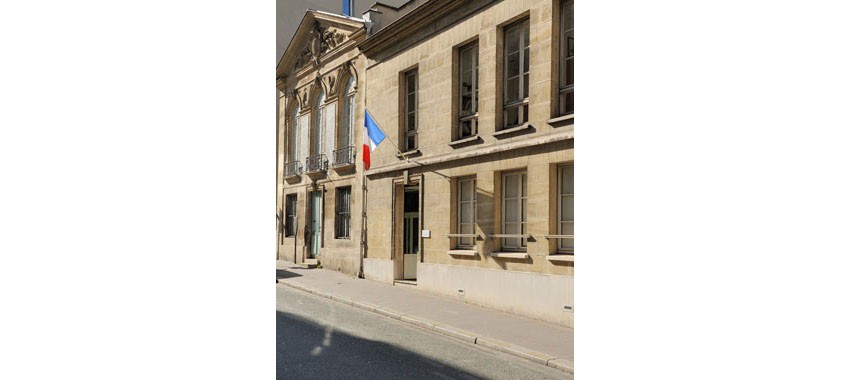No. 7
In July 2012, No. 7 became the latest Napoleonic address in Paris. The Fondation Napoléon had moved into its own building, 7 rue Geoffroy Saint-Hilaire in the fifth arrondissement, near the Jardin des Plantes. These offices house an open-stack library open to students, researchers and the general public, and the Gourgaud room which regularly hosts talks, meetings, book signings and film and documentary screenings.
The rue Geoffroy Saint-Hilaire is named after Étienne Geoffroy Saint-Hilaire, a naturalist who took part in General Bonaparte’s scientific expedition to Egypt in 1798. Geoffroy Saint-Hilaire was born in 1772 in Estampes and studied at the Collège de Navarre in Paris. He knew many of the scientists of his period (Antoine Lavoisier, Claude Louis Berthollet, Louis Jean-Marie Daubenton of the Collège de France, Antoine-François Fourcroy of the King’s Garden). He became a member of the Académie des Sciences in 1807, and later a lecturer in zoology at the Sciences de Paris university. Following Lamarck, his research showed that species had evolved through transformation. Geoffroy Saint-Hilaire published some landmark works such as the famous Philosophie anatomique (1818-1822) and the Natural history of mammals (1819). He died in 1844 and was buried at the Père-Lachaise cemetery, his tomb framed by two ibises.
During the First Empire, the north part of the rue Geoffroy Saint-Hilaire was called the rue du Jardin des Plantes, and its south part the rue du Marché aux Chevaux, referring to the nearby horse market. It was located in the faubourg Saint-Marcel, a working-class area in the south-west of Paris, near the city wall of the Farmers General, in what used to be the 12th arrondissement. The area is home to one of the most important hospitals of the city, the Salpêtrière general hospital; from the beginning of the Empire it was open only to women, and one of its quarters was then reserved for female mental patients.
The Jardin des Plantes (formerly the royal garden for medicinal plants) was created in 1626; along with its museum of natural sciences, opened in 1793, it became a place of scientific research and learning, as well as one of the few open spaces for walking available to Parisians in the east of the capital, with a maze and menagerie housing monkeys, bears and big cats.





